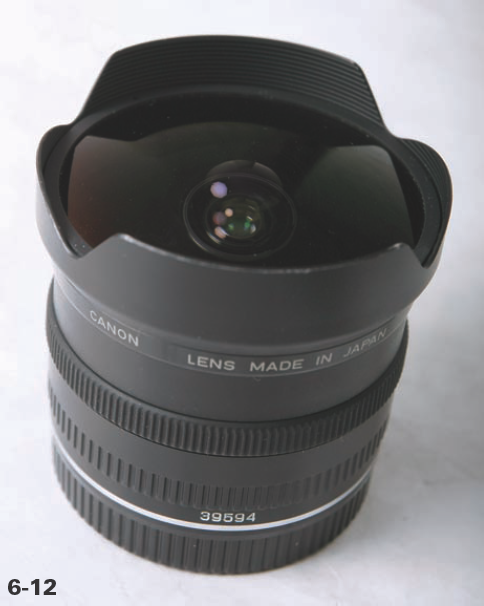6.5. WIDE-ANGLE LENSES
A wide-angle lens allows you to capture an entire scene, sometimes to the point of distorting elements of the image — which can be used for compositional effect, or it can just make your image look odd. Typically the focal range of wide-angle lenses begins around 24mm (known as superwide lenses, although Canon offers some wide-angle lenses up to 35mm) down to fisheye (shown in 6-12) and ultrawide lenses of 14mm and 15mm.
Figure 6-12. A front view of an EF 15mm f/2.8 Fisheye lens. The bubble-like qualities of the glass provide a 180-degree angle of view giving images a rounded feel. ©Serge Timacheff

Wide-angle lenses broaden the angle of view that will be recorded onto your image sensor, and they commonly increase the depth of field and bring more of the image into focus. Furthermore, wide-angle images increase the apparent distance between the foreground and the background (the opposite of what a telephoto lens does), which allows you to create some very interesting compositional effects. Additionally, they tend to be physically smaller lenses, which makes them easy to pack as an extra goody to use for interesting shots at opportune moments.
6.5.1. CANON'S WIDE-ANGLE LENS LINEUP
Not all 14mm or 15mm lenses are considered fisheye; this term refers more specifically to the angle of view (which is 180 degrees on the Canon 15mm fisheye, for example). Fisheye ...
Get Canon® EOS Digital Photography Photo Workshop now with the O’Reilly learning platform.
O’Reilly members experience books, live events, courses curated by job role, and more from O’Reilly and nearly 200 top publishers.

